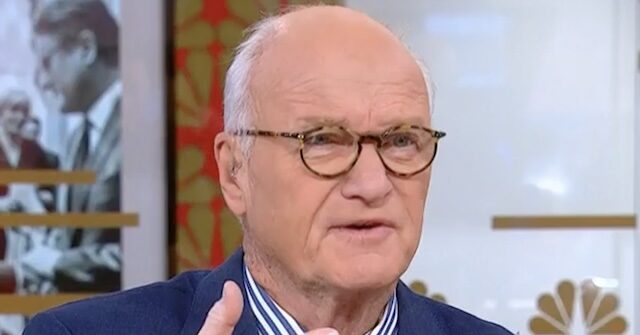In a recent discussion on MSNBC’s “Morning Joe,” senior contributor Mike Barnicle expressed uncertainty about how political commentators on cable news can regain relevance in an era dominated by social media influencers. The conversation was catalyzed by research indicating a significant shift in news consumption habits, particularly among younger audiences. Co-host Mika Brzezinski highlighted that approximately 20% of adults in the U.S. regularly obtain news from social media influencers, with this figure climbing to nearly 40% among individuals under 30. The Pew Research Center’s findings pointed to X (formerly Twitter) as the most accessed social media platform for news, followed by Instagram and YouTube, underscoring the changing landscape of news dissemination.
Co-host Joe Scarborough reflected on the challenges faced by traditional media, noting that many commentators, like Barnicle, grew up within conventional newsroom environments. He remarked on the difficulties mainstream media outlets encounter in making themselves relevant amidst the rise of quick, easily digestible content created by social media influencers. Scarborough illustrated this dilemma by referencing the phenomenon where someone can craft a compelling narrative or call to political action while engaging in everyday activities like basket-making, underscoring both the accessibility and creativity of influencer-led news sharing.
Barnicle elaborated on the struggle facing traditional news outlets, asserting that they cannot effectively compete with the immediacy and brevity of information typical of social media. He painted a vivid picture of modern news consumption, where individuals can receive a comprehensive news digest on a mobile device within mere seconds, all while navigating their daily lives. This fast-paced consumption model presents a formidable challenge for traditional journalists who are accustomed to more in-depth reporting and analysis, suggesting that they may struggle to reclaim an audience’s attention.
The trend toward influencer-based news consumption reflects broader societal shifts, where the lines between entertainment and information are increasingly blurred. Social media platforms allow influencers to engage with their audiences in ways that traditional news organizations often cannot replicate. These platforms enable real-time interaction and the creation of personalized narratives, fostering a sense of community and connection among followers. This factor may drive younger generations to source their news from influencers rather than traditional outlets, as they seek relatable and engaging content.
As Barnicle expressed his concerns, the broader conversation touches on the existential questions facing journalism in the digital age. The challenge lies not only in the competition for attention but also in maintaining journalistic integrity and depth amidst the demand for speed and sensationalism. The transformation of the news landscape requires traditional media to adapt in order to remain relevant, leveraging modern technology and storytelling techniques, while still upholding the principles of responsible journalism that audiences rely upon.
Ultimately, Barnicle’s remarks point to a critical juncture for political commentators and news organizations. The increasing prevalence of social media as a news source necessitates a reevaluation of how information is presented and consumed. In seeking relevance, traditional media may need to embrace new strategies that incorporate the strengths of social media while delivering the comprehensive analysis that established journalistic practices provide. The conversation on “Morning Joe” encapsulates the ongoing struggle of traditional media to navigate a rapidly evolving landscape dominated by social media influencers.

